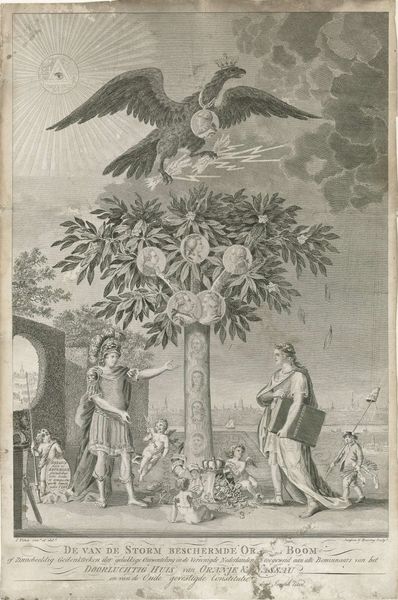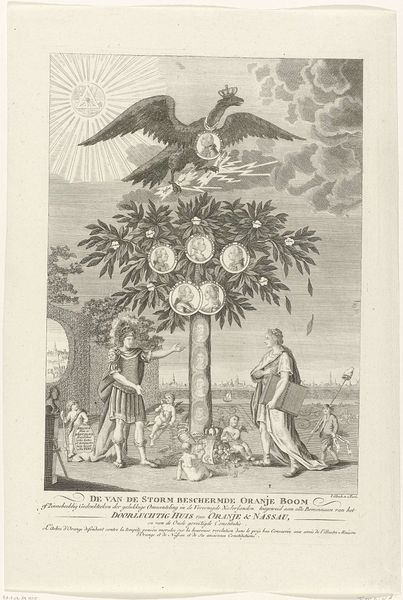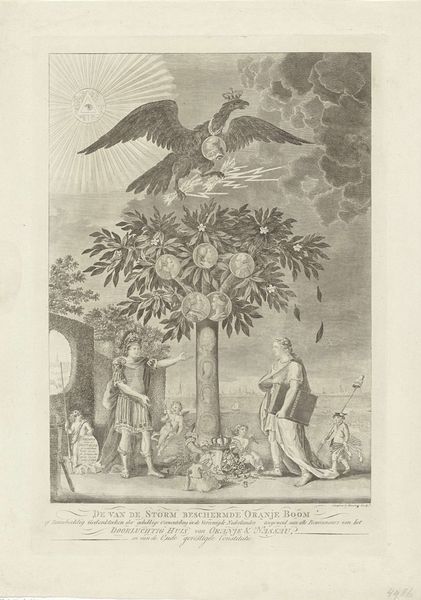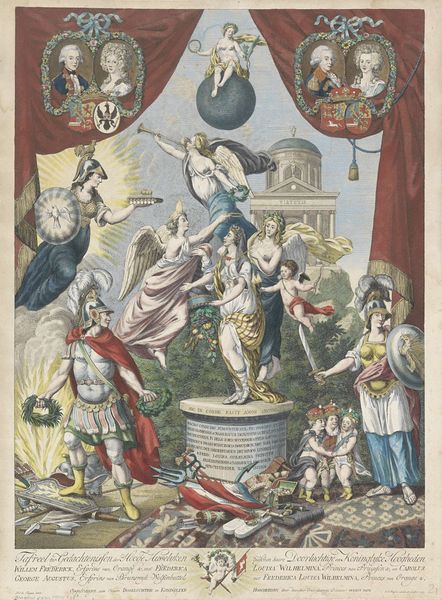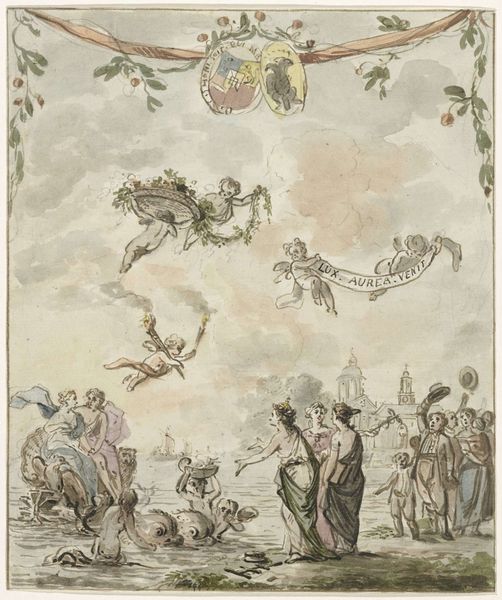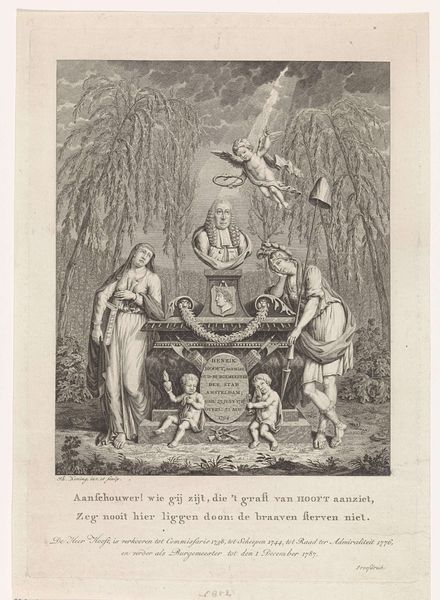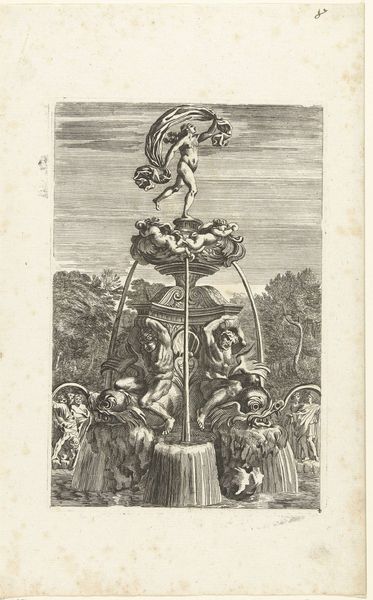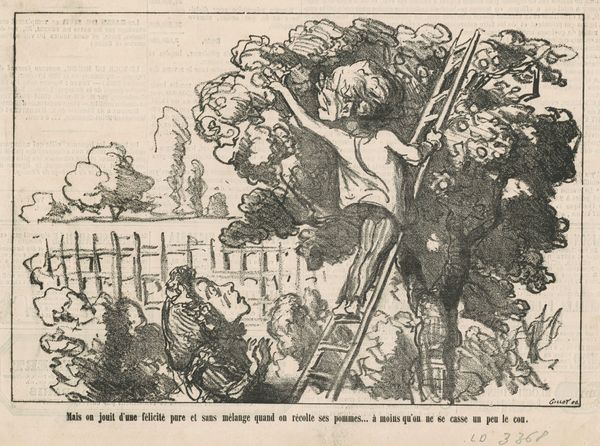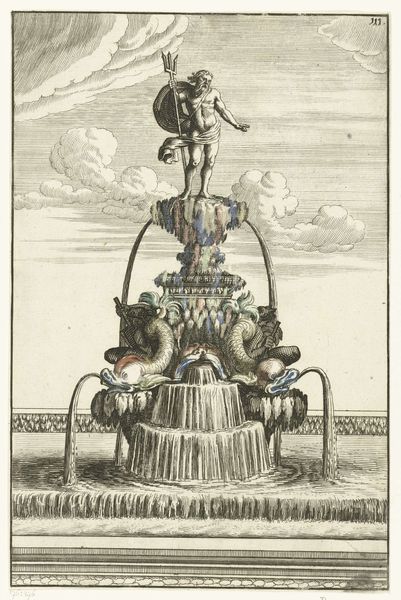
Allegorie op het herstel van stadhouder Willem V (kopie), 1787 1787 - 1788
0:00
0:00
Dimensions: height 405 mm, width 281 mm
Copyright: Rijks Museum: Open Domain
Curator: At the Rijksmuseum, we have before us an allegorical print called "Allegorie op het herstel van stadhouder Willem V (kopie)," which roughly translates to "Allegory of the Restoration of Stadtholder William V." It's estimated to have been made between 1787 and 1788 by Joseph Gleich. It appears to be a mixed-media piece incorporating engraving. What are your initial thoughts? Editor: It's busy! But in a fascinating way. The central image of the orange tree feels like a family tree. Then you have all this classical imagery alongside... cherubic figures? There is something strange about the way this combines history painting and folk art. I'm immediately interested in exploring the symbolism here and, in particular, this emphasis on restoration. What's being restored, and at what cost? Curator: The artwork uses the motif of an orange tree, which, of course, refers to the House of Orange-Nassau. Its fruit bears the portraits of stadtholders, representing their dynastic line. Above the tree, a regal eagle—a symbol of power and protection—shields the tree from stormy clouds, also crowned, carrying what looks like lightning bolts, highlighting the turbulence from which William V was "restored." Editor: This imagery underscores a return to power amidst a backdrop of revolutionary sentiment brewing across Europe at the time. That eagle almost feels menacing despite its protective posture, perhaps unintentionally highlighting the suppression required to maintain the old order. The choice to embed portraits within the fruit is also striking—like each leader is an essential part of the lineage's propagation, each resembling William, legitimising his authority through ancestry. Is this an assertion of power more than a celebration of a historical figure? Curator: Certainly. Note how classical figures—almost like guardians or representatives of civic virtues—flank the tree, as they represent values supposedly restored with William V's return. The cherubs perhaps evoke the innocent potential of the nation, now hopefully safeguarded by the restored leadership. The sun bears an intriguing triangular motif—quite common during periods referencing divine sanction. The artist employed a visual language deeply rooted in symbolism, reflecting the era's understanding of power. Editor: It speaks to the propagandistic potential of art and underscores how symbols are tools to construct historical narratives. Thank you, looking at art through these combined perspectives feels really rewarding. Curator: I agree, by unveiling and examining visual and contextual layers, we appreciate this print for both its historical significance and its insight into how cultural symbols reflect shifting political dynamics.
Comments
No comments
Be the first to comment and join the conversation on the ultimate creative platform.
